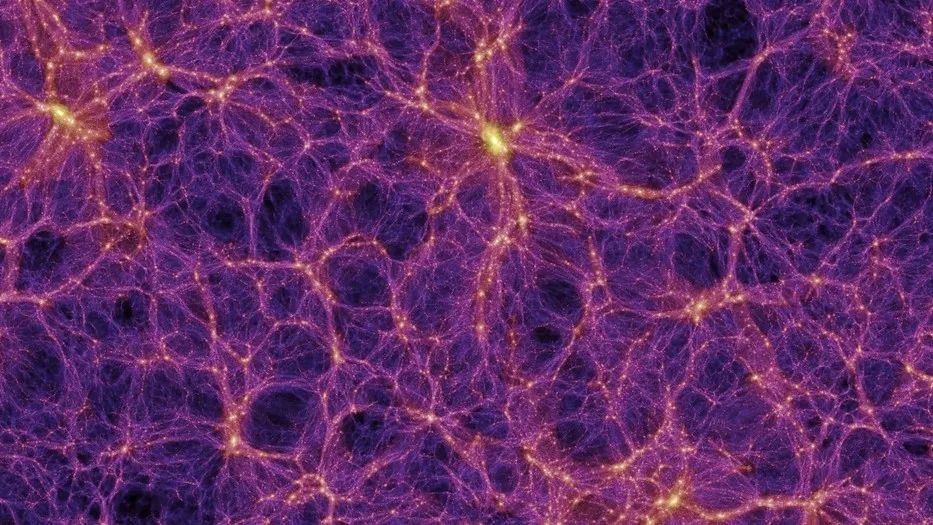Giant filaments crisscross the universe, connecting galaxy clusters like superhighways between cities. Their shape and structure encode vital information about the contents and history of the universe. But due to their complex shapes, they are stubbornly difficult to measure.
Now, researchers have presented a new method for measuring these filaments’ mass, which could be used to unlock secrets about dark matter and dark energy.
At the very largest scales, our universe resembles a spider web. Known appropriately as the cosmic web, it is the largest pattern found in nature. Within the cosmic web, there are small, compact clumps of galaxies known as galaxy clusters. Between these clusters are voids — great expanses of almost nothing. And connecting the clusters are the filaments.
Each filament forms the backbone of a supercluster and can stretch up to tens of millions of light-years and contain up to hundreds of thousands of galaxies.
Related: Massive radio survey reveals our universe’s structure at the largest scales
Each filament forms the backbone of a supercluster and can stretch up to tens of millions of light-years and contain up to hundreds of thousands of galaxies.
The detailed shape of the cosmic web and the intricate structures it contains have a long history. The cosmic web emerged over 13 billion years ago in the earliest days of the universe, when stars and galaxies first lit up the cosmic scene. The present-day structure of the cosmic web tells us about that evolution, and it is closely tied to the properties of normal matter, dark matter and dark energy. If you change any one of those components, you get a new pattern in the cosmic web.
For decades, astronomers have used simple statistics about the cosmic web, like the average separation between galaxies, to gain information about these fundamental cosmological constituents. But because we still do not fully understand the nature of dark matter and dark energy, cosmologists are hungry for more information to extract from the details of the cosmic web.
Filaments offer an intriguing avenue for studying the nature of dark matter and dark energy. Unlike the galaxy clusters, the filaments are not yet fully collapsed. But they still contain much more material than the voids. So varying the amounts of dark matter and dark energy may change the filaments’ average length, width and density.
But weighing a filament is easier said than done. That’s because most of a filament’s mass is in the form of dark matter, which is invisible to our observations. We can only map out the visible galaxies and use them to deduce the true mass and structure of the filament.
Recently, in a paper accepted for publication in The Astrophysical Journal,researchers proposed a method for doing exactly that. They calibrated their methods in cosmological simulations, which traced the evolution of dark matter, stars and galaxies. The researchers found a useful relationship between a quantity called the “redshift dispersion of the galaxies” and the underlying dark matter mass.
On average, galaxies are receding from us in an expanding universe. However, the galaxies can have some additional motion due to their local gravitational environment. So if we look at a filament, for example, some of the galaxies may be moving slightly in our direction, while others are moving slightly away. The galaxies moving toward us will have a slight bias toward the blue end of the electromagnetic spectrum, while galaxies moving away from us will be slightly redshifted.
The researchers took slices of each filament and mapped the distribution of those redshifts to get a sense of the spread in the galaxies’ velocities. Then, they tied that spread in the galaxies’ velocities to the underlying mass of dark matter in that section of the filament. They found a tight relationship between those two quantities, which allowed them to reconstruct the mass of the hidden dark matter residing inside the filament, using only the observable properties of the galaxies.
This is only the first step, however. The researchers will continue studying the relationship between galaxy velocities and dark matter mass to build a capable and confident method for estimating mass. From there, using simulations, they will see how these quantities change in different cosmological scenarios. The final step will be to apply this technique to real galaxy surveys to see what the filaments tell us about the hidden corners of the universe.

